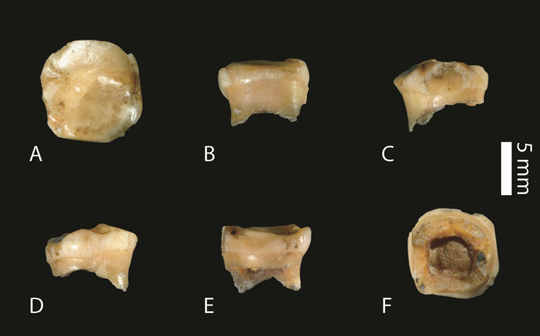The Fourth Denisovan (Further Research)
The Fourth Denisovan
Further research into the astonishing Denisova Cave (Altai Mountains, Siberia, Russia), by an international team of scientists, has produced another tantalising piece of evidence regarding the enigmatic ancient humans known as the Denisovans. Scientists have uncovered a broken tooth, a shed molar from a young girl and this single tooth fossil is evidence of only the fourth member of the Denisovans, such is the paucity of the fossil record associated with these archaic hominins.
Views of the Shed Denisovan Molar – Genetic Analysis Confirms that this Tooth was Lost by a Little Girl
Picture credit: Bence Viola (University of Toronto)
The Significance of the Denisova Cave
Fossil evidence for the Denisovans, a sister group of Neanderthals recently identified on the basis of genetic analysis had been limited to just three specimens. All these fossils come from excavations of the Denisova Cave in the Altai Mountains. Writing in the academic journal “Science Advances”, researchers including scientists from the Department of Evolutionary Genetics, at the Max Planck Institute for Evolutionary Anthropology (Leipzig, Germany), describe the discovery of a fourth fossil, a molar tooth lost by a female Denisovan.
The tooth, which was from the lower jaw comes from a deeper stratigraphic layer than most of the other Denisovan ascribed material. The location of the fossil find, in conjunction with an analysis of the mitochondrial DNA retrieved from the tooth, reinforces the idea that the Denisovans were present in this part of the remote Altai region for many thousands of years.
Viviane Slon, a PhD student at the Max Planck Institute and lead author of the study commented:
“We only have relatively little data from this archaic group, so having any additional individuals is something we are very excited about.”
The rock layer that contained the tooth is believed to between 128,000 to 227,000 years old. The research team stress in the scientific paper the need to identify other potential Denisovan sites so that more information can be gathered and then compared to the fossil remains from the Denisova Cave.
To read an earlier article about the Denisovans: Denisovan Cave Material Hints at Mystery Human Species.


